#cours theatre paris
Explore tagged Tumblr posts
Text
Exploring the Theatre Schools of Paris
Paris, the cultural heart of France, has long been a beacon for aspiring artists, particularly in the realm of theatre. The city boasts a rich tradition of theatrical excellence, with numerous schools dedicated to nurturing talent and pushing the boundaries of performance arts. These institutions blend rigorous training with a deep appreciation for both classical and contemporary theatre, making Paris an ideal destination for anyone serious about a career on the stage. Consultez leur site pour en savoir plus ecole de theatre paris.
Historical Context
Theatre in Paris has roots that extend back to the Middle Ages, with the city's first permanent theatres established in the 16th and 17th centuries. This historical context provides a fertile ground for theatre education, as students are immersed in a tradition that includes iconic figures such as Molière and Racine. The blend of historical influence and modern innovation creates a unique educational environment.
Notable Institutions
Conservatoire National Supérieur d'Art Dramatique (CNSAD)
One of the most prestigious theatre schools in Paris is the Conservatoire National Supérieur d'Art Dramatique (CNSAD). Founded in 1784, CNSAD has a storied history of producing some of France's most notable actors. The conservatoire offers a comprehensive curriculum that includes acting, voice training, movement, and stage combat, as well as classes on theatre history and dramaturgy. Admission is highly competitive, with auditions that test not only technical skill but also artistic vision and emotional depth.
École Internationale de Théâtre Jacques Lecoq
Another cornerstone of Parisian theatre education is the École Internationale de Théâtre Jacques Lecoq. Known for its emphasis on physical theatre, this school focuses on the body's expressive potential. Founded by Jacques Lecoq in 1956, the school teaches techniques based on mime, mask work, and improvisation. Lecoq’s pedagogy encourages creativity and innovation, helping students develop their unique artistic voices. The school's influence can be seen in the work of numerous successful theatre companies and actors worldwide.
Cours Florent
Cours Florent is renowned for its practical approach to acting. Established in 1967, it offers an array of programs in French and English, making it accessible to international students. The school is known for its dynamic training methods and emphasis on contemporary theatre. Cours Florent alumni include notable actors such as Audrey Tautou and Diane Kruger. The curriculum includes acting classes, workshops, and opportunities to perform in student productions, providing a well-rounded education in the performing arts.
Unique Pedagogical Approaches
Parisian theatre schools are distinguished by their diverse pedagogical approaches. CNSAD offers a classical conservatory experience, emphasizing a rigorous and comprehensive study of acting. In contrast, the École Internationale de Théâtre Jacques Lecoq emphasizes a physical and improvisational approach, encouraging students to explore and expand the boundaries of traditional theatre.
Moreover, many schools incorporate a strong element of practical experience. Students at institutions like Cours Florent and Studio Magenia (specializing in physical and gestural theatre) are frequently involved in public performances, giving them a taste of professional theatre life and allowing them to build their résumés.
Cultural Immersion
Studying theatre in Paris also means immersion in a vibrant cultural landscape. The city is home to numerous theatres, from the historic Comédie-Française to contemporary venues like Théâtre du Châtelet and Théâtre de la Ville. This allows students to regularly attend performances, participate in festivals, and engage with a dynamic community of artists.
Conclusion
Parisian theatre schools offer a unique blend of historical tradition and modern innovation, making them ideal for aspiring actors and theatre professionals. Institutions like CNSAD, École Jacques Lecoq, and Cours Florent provide rigorous training while fostering creativity and individuality. The rich cultural environment of Paris enhances this education, offering students countless opportunities to grow as artists and performers. For those passionate about theatre, studying in Paris is not just an education; it's an experience that shapes and defines their artistic journey.
1 note
·
View note
Text
Danza 1*
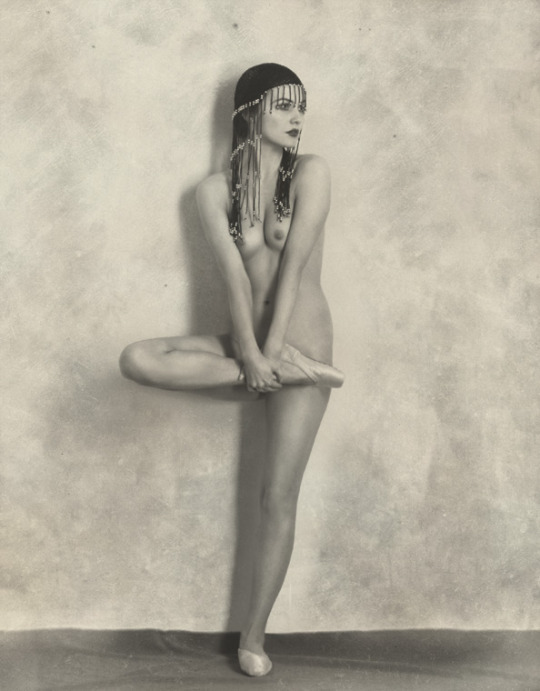
from serie Art Deco, 2007: Tantsovschitsa, 1920 | ph., Aleksey Galushkov (Ukraine)
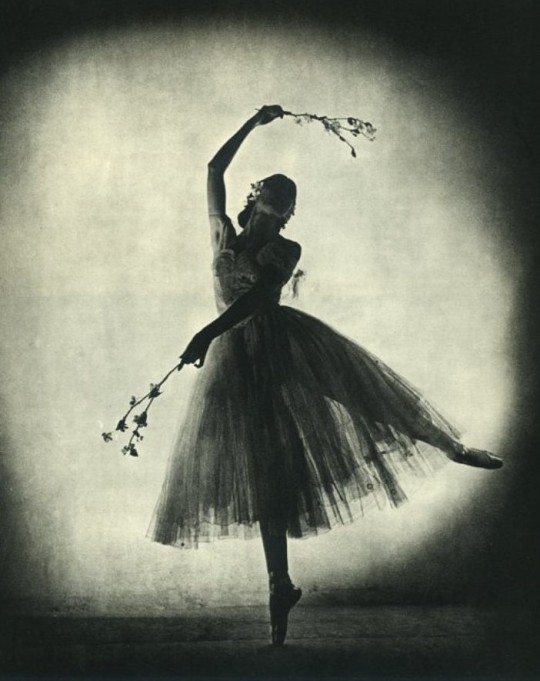
Alicia Markova (1910-2004, England) as Giselle, 1948 | ph., Stirling Henry Nahum aka Baron (1910-1956, Italy-England)
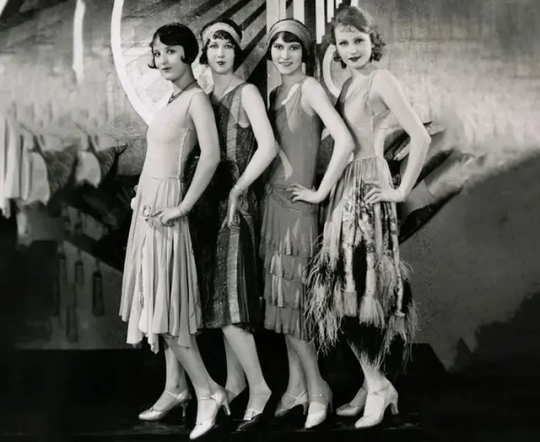
Flapper Girls, 1920's

Anita Berber (1899-1928, Germany), 1920 | ph., Alexander Binder (1888-1929, Germany)

Doris Dupont (USA), 1930's | Archives of the Embassy Theatre Foundation, Ft. Wayne, Indiana

Untitled (dancer I), 1910-20 | František Drtikol (1883-1961, Czechia)
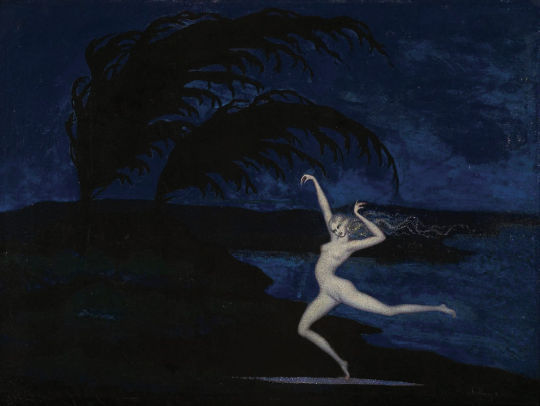
Dance of the Wind, 1927-28 | Bolesław Biegas (1877-1954, Poland)

Ballerina; a view from the loge | Everett Lloyd Bryant (1864-1945, USA)

Dancer, 1946 | František Drtikol (1883-1961, Czechia)
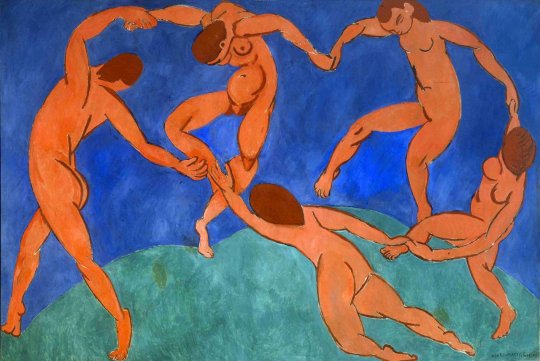
La Dance, 1910 (Hermitage St. Petersburg) | Henri Matisse (1869-1954, France)

Danseurs, 1939 | Maurice Brianchon (1899-1979, France)
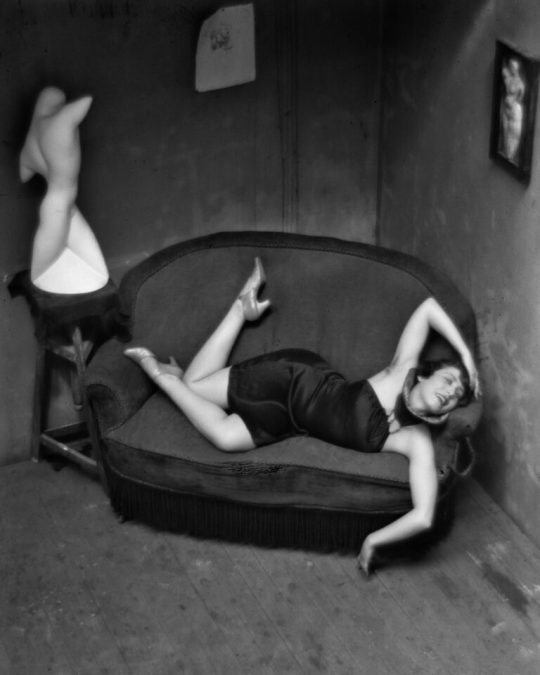
Danseuse satirique, Paris, 1926 | ph., André Kertész (1894-1985, Hungary)

ph., Mark Olich (1983, Russia)
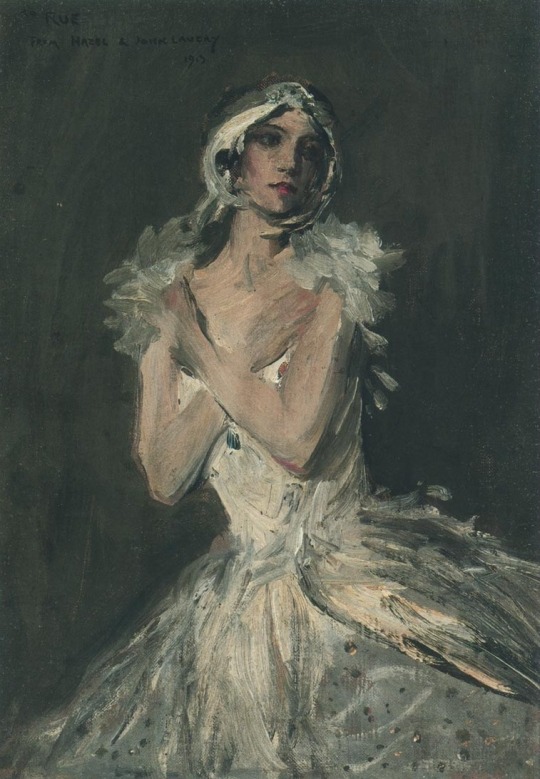
Hazel as Pavlova, 1913 | John Lavery (1856-1941, Ireland)
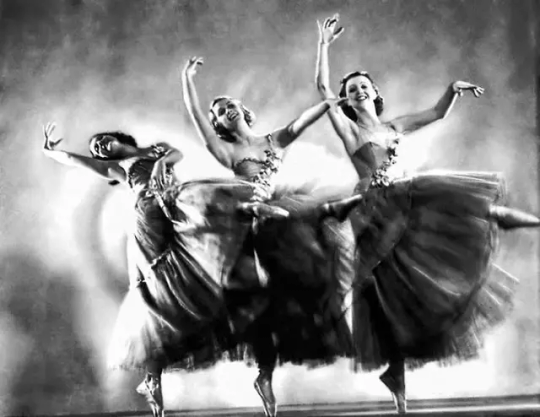
Ziegfeld Girls, 1920's | Ziegfeld Follies, 1907-31
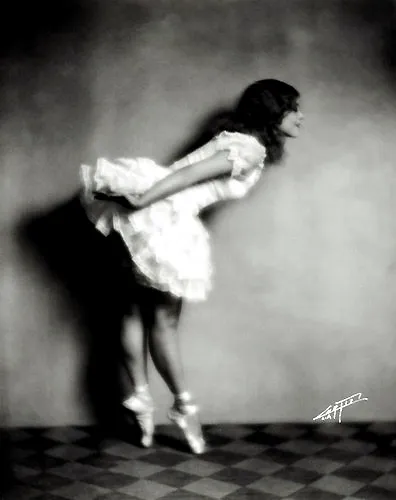
Mary Pickford (1892-1979, Canada-USA), 1910's | ph., Edward S. Curtis (1868-1952, USA), 1910s Ziegfeld Girl, 1907-31

Spanish Dancer, 1971 | ph., Ruth Bernhard (1905-2006, Germany)
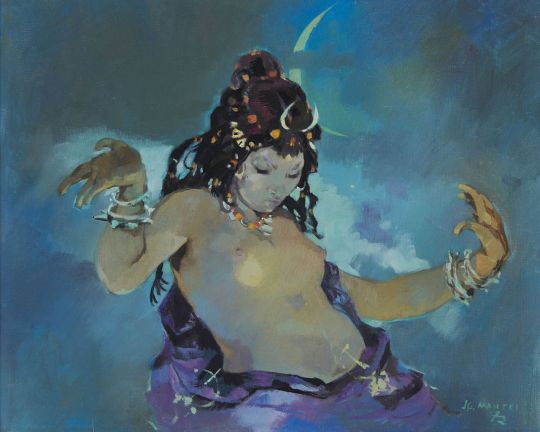
La guedra (moroccan dance) | Jean Gaston Mantel (1914-1995, France)
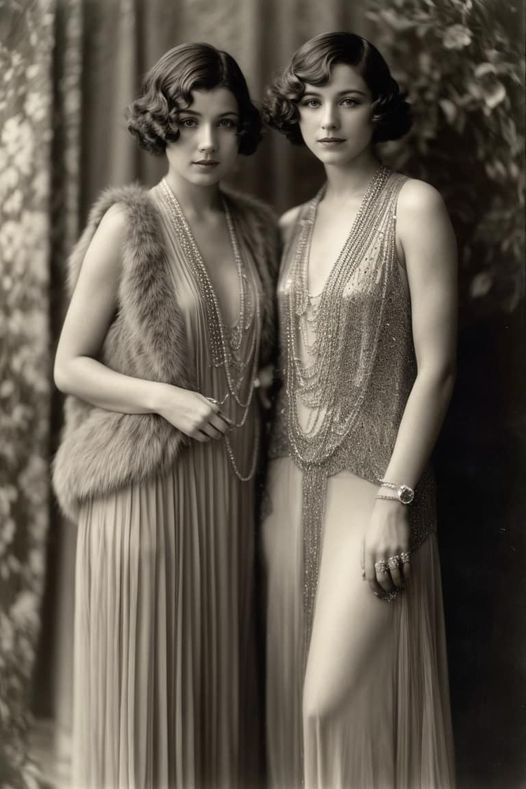
Dancers from 'Zigman Hall', New York, 1920

La scarpetta (the ballet slipper) | Lino Selvatico (1872-1924, Italia)

Helen Schjerfbeck (1862-1946, Finland)

Costumes de cigarières pour Carmen de Bizet, 1959 (scenografia dipinta) | Lila De Nobili (1916-2002, Italia)

Colombine, 1920 | Norman Lindsay (1879-1969, Australia)

Danseur | Jean-Louis Forain (1852-1931, France)
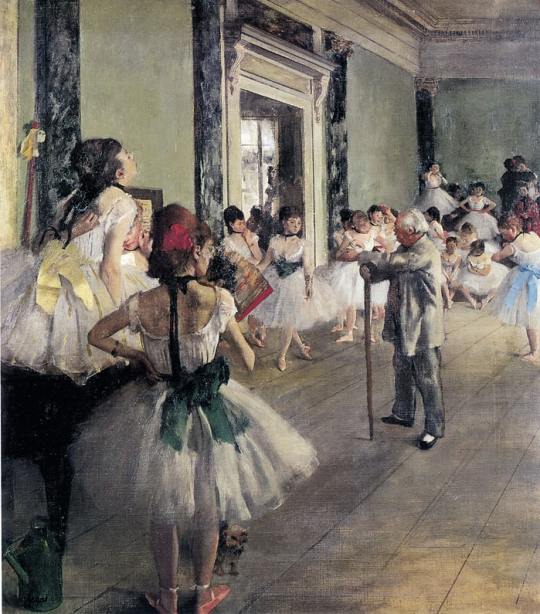
Le cours de danse, 1874 | Edgar Degas (1834-1917, France)
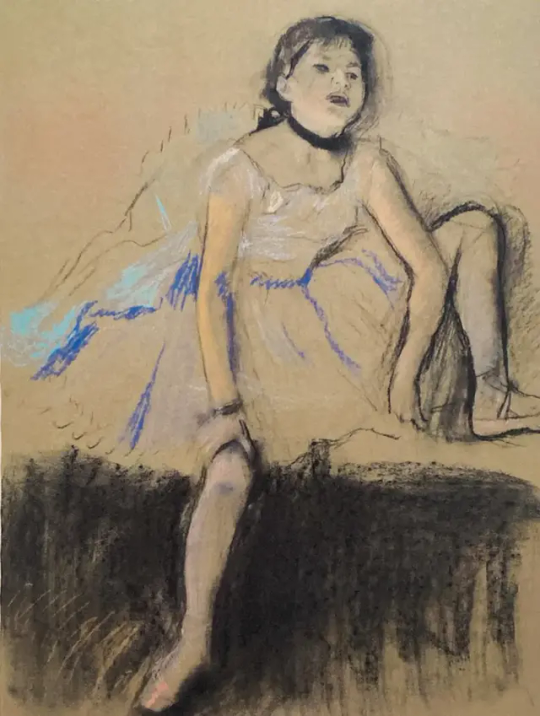
Danseuse au repos | Edgar Degas (1834-1917, France)

In camerino | Zinaida Serebryakova (1884-1967, Ucraina)
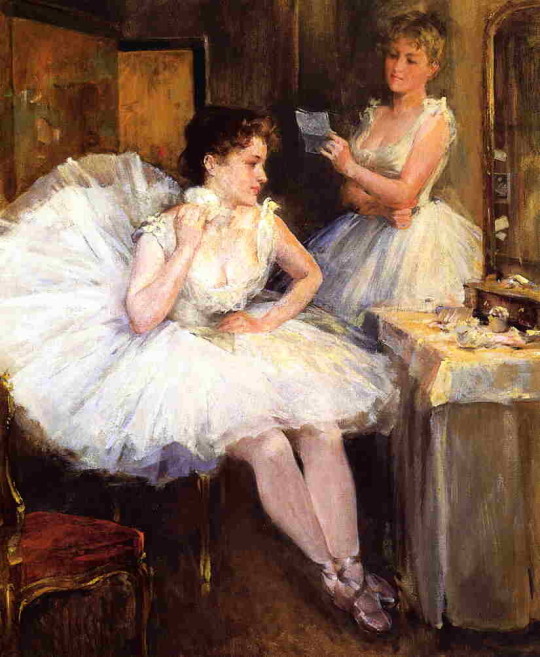
The ballet dancers (the dressing room), 1885 | Willard Leroy Metcalf (1858-1925, USA)

Dancer, early 1900s | Sergei Arsenyevich Vinogradov (1869-1938, Russia)

Ballerina at the Paris Opera in front of a Degas backdrop, 1949 | ph., Walter Sanders (1897-1985, Germany)
11 notes
·
View notes
Text
Larsene, le magicien s’annonce à la Gaîté Montparnasse en mai

Larsene vient dévoiler son nouveau spectacle de magie et mentalisme au Théâtre de la Gaîté Montparnasse, du 16 au 28 mai 2023. Très attendu, celui que certains considèrent comme le meilleur magicien du moment, est à ne pas rater pour ses dates parisiennes.

arsene vaut le détour, il n'y en pas deux comme lui ! Le magicien est depuis longtemps passé maître en manipulation, au sens propre comme au figuré. Sa dextérité à faire virevolter les cartes et sa rapidité d’exécution sont remarquables. Son humour savamment dosé renforce le capital sympathie du personnage, qui reste élégant, en toute circonstance. Un spectacle qui promet d’être interactif et plein d’humour. Depuis plus de 20 ans, il a fait de la magie dite close up une de ses spécialités. Cette discipline consiste à réaliser des tours de cartes à quelques centimètres des spectateurs, au cours d’un diner ou d’un cocktail. L’exercice demande une très grande dextérité mais pas seulement. Le succès de l’animation est étroitement lié au charisme de l’artiste qui exécute le tour. Larsene séduit le public grâce à son humour, sa répartie et son élégance.
Billetterie
03 avril 2023 en avant-première à 20h30 16 mai au 28 mai 2023 à 19h la semaine et le dimanche à 16h30 THEATRE LA GAITE MONTPARNASSE PARIS
youtube
youtube
0 notes
Text
@phatburd: Found the memoirs of Mademoiselle Avrillion. Here's the part on Bessières's love life:
I have no intention, as one might think, of interjecting the Almanach galant de la cour impériale into these recollections; nevertheless I will not repudiate all the anecdotes of this kind that come to my pen. Marshal Bessières was, in the widest sense of the word, a very good and very kind man, not counting his rare military talents, which are outside my field. His wife, lady of the empress's palace, was very pleasant in person, with a charming character, a truly angelic gentleness and irreproachable conduct. They lived together very well, which did not prevent the Marshal from sometimes succumbing to what one might call temptation.
The way she phrases this makes me think that Virginie may not have been the first „temptation“ Bessières succumbed to. Only the first his wife learned about. Which would fit the picture, in my opinion. Eugène and Bessières had, allegedly, lived quite wild lives before Bessières got married. Eugène was still a womanizer, if very discreet, Bessières may have been as well. Plus, their close friend Duroc also had a long-standing liaison (and two children) with an opera dancer.
Marshal Bessières had therefore noticed, in the chorus of the Opéra, a young and pretty dancer whose name, which has since become very famous, was then little known. Her name was Virginie; she was extremely young and barely formed, but charmingly sweet; her large, beautiful black eyes had an expression that could not have been more seductive.
I guess this description allows us to fix the date when Bessières's affair with Virginie started at the year 1810, when Virginie at the age of 15 first joined the Paris opera ensemble.
Her father, as history has since established, was a hairdresser at the Opéra theatre. The Marshal, having taken Virginie completely under his protection, […]
… which I take to mean that he was Virginie's only lover ...
[…] rarely missed the ballet at the Opéra, where I often saw him, his spyglass directed at the dancing chorus, making signs of understanding to his beloved beauty. We know what cruel and glorious death stopped the marshal in his noble career; the maréchale was in despair when she learned of this irreparable catastrophe, and an unexpected circumstance added to her all too justified grief: women will understand me. When she visited the objects in her husband's secretary, she found irrefutable proof of his liaison with Virginie. Here is how this anecdote came to my attention: Coilia, a miniature painter, wishing to paint her majesty, placed several portraits in her hands so that she could judge his talent; one of these portraits was of Virginie, and it was while showing it to me that the empress told me what we have just read. When Madame Bessières returned to La Malmaison for the first time after her husband's death, she told the Empress that the discovery she had made of her husband's infidelities had greatly increased her grief and had dealt her a very serious blow. The Marshal had always conducted himself with her in such a way as not to inspire any suspicion, and if some people had been informed of his liaisons with Virginie, the person interested in knowing about them had always ignored them.
Among the people who knew about the liaison obviously was Mlle Avrillon herself, as she claims to have observed Bessières making signs to his girl at the opera. I'm also not quite sure from this account if Joséphine told her femme de chambre about Bessières's affair with Virginie before or after the visit by Madame Bessières. So maybe Joséphine also knew?
Virginie was destined to lose her lovers to a tragic death: a cannonball killed Marshal Bessières, and we know what happened to the unfortunate Duc de Berry.
Notably missing from this are all descriptions of Bessières's financial involvement, the money he spent on his lover. So this part of the story must come from elsewhere.
Bessières and the 600,000+ Franc Question
For @josefavomjaaga
While going over sources and material related to Jean-Baptiste Bessières, there's one thing that keeps twigging my journalist Spidey sense, and I don't like that.
Always, without fail, it's presented as a fait accompli that Bessières blew anywhere between 600,000 to one million francs on his mistress, a Paris opera dancer named Virginie. The fact he had a mistress isn't actually unusual by itself, when compared to the affairs his peers carried on. The exceptions were probably the Davouts and the Lefebvres.
Furthermore, his wife, Marie-Jeanne, discovered the affair after his death when his personal affects were returned to her from the battlefield.
The massive debts the Marshal left behind bankrupted his family, necessitating that Marie-Jeanne into selling their estate, Chateau de Grignon, to cover some of it. Napoleon also paid down some of Bessières' debts and set up a yearly pension for Marie-Jeanne her son. According to some accounts, she struggled financially for the rest of her life.
This is what I don't like about it, and why it doesn't completely pass the sniff test.
I accept that Bessières died flat broke and in debt. In debt to whom, however? Who were his creditors?
When did he meet his mistress? Was that fortune spent over a period of years, or in a fairly short time?
Even as a Marshal of France he had to pay his officers out of his own pocket, and provide his own carriages and some supplies on campaign. If he was flat broke, how did he continue to pay his officers?
Bessières was also bad with money to begin with. He was known to be generous and charitable, to the point where he'd be giving away money to anyone whom he thought was more in need than he was with it. Allegedly, Virginie was in debt herself, and he paid down all of them out of the apparent goodness of his heart.
(This raises even more questions. Was she a gold digger, was she blackmailing him, was he totally besotted with her that he didn't realize what the hell he was doing? Was he just lonely? Did they have genuine feelings for one another? There's a lot of there there, but no real answers.)
My conclusion is, no, Bessières did not spend 600,000 to one million francs on his mistress. Her presence, however, was not helpful to his situation.
He paid down Virginie's debts, however much they were. Being terrible with money, he kept putting himself in a financial hole, and then he kept digging. The upkeep on Chateau de Grignon had to be ridiculous. He still had to pay his officers and his staff. He was probably borrowing and burning through money and racking up the debt. Like that meme goes, "This is fine" while everything's burning down around him. A bit like using a credit card to pay down a credit card, as one might do in the modern parlance.
(His financial problems may have contributed to his increasing depression towards the end of his life as well. Was someone blackmailing him with his debts? Another interesting question that can never be adequately addressed.)
From what I've gathered, he hid all his problems from pretty much everyone. Even Napoleon seemed caught off guard with how bad Bessières' finances were. I argue that the 600,000 to one million francs he owed upon his death were cumulative and not to a single person as the historical narrative wants people to believe.
It seems a small thing to be annoyed with, but there seems to be more than a bit of misogyny to lay all of Bessières' troubles on a single woman as the historical narrative seems to want to do.
Another thing ... if Bessières burned a lot of his recent correspondence towards the end of his life, what exactly was the evidence Marie-Jeanne discovered as proof of the affair. How did she prove it? Did other people know about the affair and kept her in the dark? If so, who was that?
In the novel, "The Battle" by Patrick Rimbaud, a semi-fictionalized account of the Battle of Aspern-Essling, Rimbaud's characterization of Bessières has him wear two gold lockets under his Marshal's uniform. One for Marie-Jeanne, the other for Virginie. I don't know if Rimbaud based that on an actual account, or if it was something he made up. I have a lot of problems with that book though, probably because the translation seems somewhat robotic and not great. It's an interesting idea, however, and maybe worth keeping around as a headcanon.
Did Madame Bessières struggle financially for the rest of her life afterwards? Possibly. I don't have enough information to make a conclusion there, but it's not impossible. She did continue to faithfully visit his tomb for years after his death.
TL;DR Bessières died broke and in debt but it wasn't all because of his mistress. If someone else has something to the contrary, I'd love to read it.
44 notes
·
View notes
Link
Vous cherchez un cours de théâtre sympa, pour adultes, à Paris, ouvert à tous? Vous l’avez trouvé ! Notre école, au coeur de Paris, dans des salles chaleureuses et confortables.
1 note
·
View note
Photo

Cours loisirs comédie musicale adultes. On chante, on danse, on joue la comédie, dans une bonne ambiance. Une parenthèse de détente pour vivre sa passion encadrés par de talentueux pédagogues ! Reprise des le lundi 6 septembre, lundi, mardi, mercredi, vendredi…. Venez découvrir nos ateliers !!!! #paris #cours #atelier #musical #ecoledecomediemusicale #paris75013 #kremlinbicetre #danse #theatre #chant #gentilly #ivrysurseine #chorale #loisirsadultes (à Paris, France) https://www.instagram.com/p/CSgVgueAIsv/?utm_medium=tumblr
#paris#cours#atelier#musical#ecoledecomediemusicale#paris75013#kremlinbicetre#danse#theatre#chant#gentilly#ivrysurseine#chorale#loisirsadultes
0 notes
Link
DES COURS DE THEATRE POUR TOUS :
A VOUS DE JOUER !
Vous cherchez un cours de théâtre sympa, pour adultes, à Paris, ouvert à tous? Vous l’avez trouvé ! Il s’adresse aux amateurs débutants ou avancés qui souhaitent se divertir, partager, s’exprimer et progresser. Vous souhaitez vaincre votre timidité et prendre confiance en vous, dans un cadre de loisirs détendu et enthousiaste ? Vous aimeriez découvrir une activité qui regroupe le plaisir de jouer la comédie, celui de prendre la parole en public, et , enfin, celui de vous initier à l’art dramatique, tout en vous amusant ? Notre cours de theatre à Paris, dans des salles chaleureuses et confortables (Notamment la salle de répétitions du prestigieux théâtre des Variétés à Paris) vous propose son club de theatre, des cours et stages artistiques de qualité, pour adultes ouverts et adaptés aux débutants. Alors, si vous vous posez la question: « Que faire à Paris ? » : la réponse est simple : Faire du théâtre !
0 notes
Text
Animation Night 93 - René Laloux
Bonjour mes amis! C'est la soirée animations!
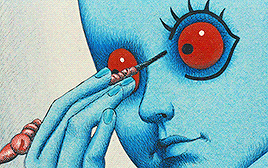
French animation - it’s been a while, hasn’t it? Tonight we’re going to be returning to someone we haven’t seen since Animation Night 71 - Moebius - a director who really lives up to the French reputation for ‘weird’ and ‘arty’ in the best way. That is, we’re going to watch the two remaining films of the renowned René Laloux - Fantastic Planet (La Planète sauvage) (1973) and Gandahar (1987).

I feel like these gifs alone are probably more than sufficient reason to watch these films, but if the images aren’t enough to entice you alone, let’s add a little historical context!
So, what can we find out about René Laloux? The basic facts are easy to find: most biographies will tell you that Laloux was born 1929, attended art school in Paris, and worked in the ad industry for a while before getting a job at a psychiatric institution where he made shadow plays for the patients, and eventually created a cutout-animation short film The Monkey’s Teeth.
For a more detailed account, a little digging turns up this essay by Craig Keller in 2006. Much too long to quote in full, it relates how René enjoyed a comfortable childhood until - of course - the outbreak of WWII, during which René’s dad left to fight the Nazis with the French Resistance. At this point, he took up an apprenticeship in woodcarving, and started learning about the arts:
Motivated and curious, he set out to supplement the family income, and thus took on at age thirteen an apprenticeship in wood-carving beneath an uncle who specialised in creating Gothic-style representations of the Pietà . One might earmark this stint as Laloux’s first commercial foray into the figurative arts, but he is likely to have begun to truly hone his expressive talents by attending a series of evening art classes each day after the close of the studio. The requisite cultivation of personal tastes would follow in the immediate post-war period when, reveling in everything up for offer in this city reborn, Laloux discovered theatre, literature, painting, — and, of course, the Cinémathèque.

In the years after leaving home, he lived a chaotic life, in which he practised puppetry while working a range of jobs including woodcarver, bank clerk, and plastic bag manufacture. In the middle of this was a period of compulsory military service in Austria, which he despised.
The psychiatric institution mentioned above turns out to be La Borde Psychiatric Clinic in Cour-Cheverny. Keller writes that this was at the time going through an experiment in how such facilities were run, which played a part inspiring the theories of - guess who - Felix Guattari, at the time a doctor at the clinic!
La Borde’s system, by contrast, favoured an atmosphere that evoked less a Foucauldian vision of servitude and control than a borderless extension of the outside world itself: no locked doors, a regular schedule of group activities for patients, and a setting of expansive green that circled the main residence, a handsome assemblage of château-like quarters. Patients at La Borde (present in large part to receive treatment for depression) were unconfined, free to roam the grounds as they would and, as part of an overarching communal spirit, take part in the decision-making process with regard to the logistics of life at the clinic.
Yeah, wasn’t expecting Guattari to show up in this story. I admit, when I read that he worked at a psychiatric institution I was a bit like, uh-oh, but actually it seems like it was a lot better than all that...
Given René Laloux’s terror of fascism grand and quotidian (and his understanding that there is little use in differentiating between the two degrees), he seemed to have found in his employment at La Borde a perfect calling. Oury and Guattari were likewise pleased with the artistic spirit and sense of generosity that Laloux graced upon the patients; his workshops devoted to painting and shadow-puppetry were many residents’ favourite pastimes.
Laloux started looking into film at this time, working with the patients at the institution. Their first two films were very experimental...
Tic-tac (Tick-Tock, 1957), which documented their shadow puppetry - unfortunately I can’t embed this but you can watch it here.
Les Achalunés (The Achalunés, 1958), which used a creative technique with pieces of coloured glass filmed behind tracing paper - available on the same site
There was also an attempt to create a film to the music of Pierre Schafer, but this fell through. Then, when news of Tic-tac getting purchased for TV broadcast reached the hospital, Laloux and the excited patients set out to make the film that became known as Laloux’s debut, Les Dents du singe (The Monkey’s Teeth, 1960):
youtube
This wordless, dreamlike, deliberately paced film depicts a dentist pulling teeth from an anaesthatised patient, who chases after the dentist as a monkey rides around on a bike; it’s full of surreal transformations and varied styles. (I admit the patient at the beginning having his teeth pulled puts me a little bit in mind of Salad Fingers); eventually the monkey reaches the dentist and pulls his teeth in turn, transplanting them to the original patient. Edit: I found a version with the making-of part, but let me quote anyway:
The opening of the film details in several minutes of black-and-white documentary footage the participants at work: seated around tables, they puff on Gitanes, discuss the storyline and make sketches. A narrator informs the viewer that each patient had devised a “récit” for a single character who would remain “his” or “hers” throughout the course of development, before a consensus could be reached with regard to which narrative threads should be woven into the final work. Unfortunately, the framework established by the film’s prologue stops short of documenting the most laborious part of production: the animation process. When preparation of the scenario and artwork had been completed, Laloux worked with Julien Pappé to instill life in the elements — nothing more complex than articulated paper cut-outs — by photographing them frame-by-frame with a camera positioned over an illuminated animation stand. Pleased with the relative speed afforded by this method of work, Laloux continued for years to experiment with paper cut-outs, developing the style into something of an artistic — and artisanal — signature.
This all definitely made an impression, earning Laloux the Prix de Emile Cohl, a prestigious prize for French animation. The awards ceremony threw him into contact with Hara-Kiri artist Roland Topor - they got to express their mutual admiration and soon, with Laloux leaving the clinic, they set to collaborating on a short film - Les Temps morts. Here’s how Keller describes the work...
Les Temps morts (Dead Times, 1964) is a narrated-poetic-animated essay that explores through archival documentary footage and inky, black-and-white drawings by Topor the atrocities of war and, as inverse to André Malraux, man’s destiny. The overtly philosophical (and justifiably cynical) tone of the film certainly makes the work stand apart from the vast majority of animated cinema; seen from a 21st century vantage, its mood and visual style (Topor’s cross-hatching technique essentially embodies “conflict”) seem to anticipate the tone of the modern graphic novel.
You can watch it here:
youtube
It does feel rather like something you might see at Annecy today, doesn’t it? But this is the OG annecycore - there wasn’t much like it in the 60s! Topor’s drawings of mutilated bodies, piles of limbs, and general strangely placid carnage call to mind The Wall two decades later. In terms of animation, it’s almost entirely a camera panning over static images, with occasional cutout animation, to a drily cynical voiceover describing the many many ways humans make death a routine part of our lives. The music is a suitably forlorn accompaniment.
Not long after, Laloux and Topor continued their collaboration on another, more narrative project: Les Escargots (The Snails, 1965), which perhaps was his first big step towards the surreal sci-fi he’d eventually become known for. A farmer struggles to raise his crops through a series of unorthodox means including magnets and balloons, and meets unexpected success by using his own tears, only to be menaced by enormous snails... who soon die out, leaving a land covered in enormous shells.
youtube
The film moves from heavily hatched ink drawings to paintings, animated once more with cutout animation.
This, too, was successful, and Laloux and Topor got the bug to make a feature film, which would become Laloux’s most famous work. For a story, they chose Oms en série (Oms in Series, 1957) by French science fiction author Stefan Wul, in which human Oms are enslaved to aliens. Of course, such a feat was way outside the scope of just two artists; Topor refused to do more than pre-production to define the look of the film, so Laloux turned to... the Czech republic, which has its own very interesting tradition of animation which we must cover on here! He enlisted Josef Kabrt to handle the technical animation work, moving from the old jointed paper cutouts to something closer to traditional cel animation (but with cutouts instead of cels).
Kabrt, for his part, brought to the project a sharp technical instinct — he had steered Laloux toward the idea to animate the film with discrete, un-jointed elements — that the French filmmaker found representative of the high standards of Czech animation. This impression, coupled with the political “thaw” then underway in Czechoslovakia, influenced Laloux and his producers to undertake the long project as a French-Czech co-production and, in doing so, alleviate some of the financial burden necessitated by the film.
The production didn’t go entirely smoothly. At one point the Czech producers considered essentially staging a coup, removing Laloux to make a more nationalist film with Kabrt as director - fortunately this amounted to nothing and the film, now titled La Planète sauvage in French and Divoká planeta in Czech (literally The Wild Planet, but better known in English as Fantastic Planet) dropped in 1973 to enormous acclaim.

The film tells the story of the rebellion of the enslaved humanoid Oms against the giant, oblivious Draags, who fancy themselves an enlightened ascended race spending their lives in a blissed out state. But when an Om manages to escape with a tutorial headset containing the secrets of Draag technology, the Oms rise up, shocking the Draags who saw them as domesticated animals. The rebellion provokes a campaign of genocidal extermination as the Oms race to escape the planet on rockets.
Keller interprets this film as being, in some significant part, a metaphor for mind-expanding states like drugs and sex:
It’s not going far at all to uncover in La Planète sauvage barely veiled references to the benefits of getting high — whether that means taking drugs (cf. the vapour-inhalation, and all the shape-shifting that transpires before dilating eyes), exercising the libido (cf. the cock-shaped rockets, and the headless — therefore ego-resistant? — statues used in the extraplanetary mating ritual), or, simply and literally, meditating transcendentally. (...) It’s probably to La Planète’s merits as, above all, an “experiential aid”, that the film avoids the sci-fi cliché of a proxied, connect-the-dots allegory, and settles instead on presenting a broad, even simplistic, message or moral ideal — “the mind’s true liberation,” to quote The Fifth Dimension — in a mind-blowingly original way. In Laloux’s film, style itself lends truth to beauty, draws dignity out of the easy lesson. (In fewer words, and to quote another luminary of the zeitgeist, “the medium is the message.”)
Laloux would make one final collaboration with Topor, a short film titled Le Jeu (The Game, 1975).
Keller’s story ends there (with some praise for the elements that make up the film, such as the score), but of course, Laloux had two more films in him before his life was cut short by a heart attack in 2004. One is Les Maîtres du temps (The Time Masters, 1982), a delightful film made in collaboration with the renowned comic artist Moebius which we watched back on Animation Night 71. At the time I could turn up relatively little information about the film’s production; this time I’ve been able to retrieve one small tidbit from this page:
Jacques Dercourt, one of the producers, suggested the outsourcing to PannóniaFilm in Hungary, most likely through being impressed by their JANKOVICS Marcell-directed features. It was felt that while they lacked much of the technical skill and experience of the Czech animators, their more modern style would more easily mesh with that of Mœbius — however, Laloux and Giraud himself have ever since regretted this decision, and blame the animation's inconsistency, to an extent, on cultural divisions between themselves and the Hungarians.
As that quote suggests, Laloux did not regard the film as a success - but he collaborated with Moebius one more time, on a short film La Maîtrise de la qualité (Quality Control, 1984), though regrettably I don’t seem to be able to find this one anywhere.

Following this collaboration, it seems Laloux stepped back from feature films for a bit, instead directing three episodes for the 1984 short science fiction film collection series De l'autre côté (On the Other Side). Here he began a collaboration with another talented French comic artist from Les Humanoïdes Associés, Philippe Cazaumayou, better known as Caza - you can check out some of his work here. I don’t have information on how Laloux and Caza met, but at least one of their segments, La Prisonnière (The Prisoner, 1988), available here:
youtube
(Unfortunately the falling slow absolutely kills the compression on this one.)
It’s full of that distinctive Humanoïdes drawing style, with austere, unusual architecture, super-defined faces, and lots of hatching. The story is rather vague - it feels like just a montage of images of two bald children running through a vast city while... various rituals seem to happen. There’s quite an interesting way of painting spray from the sea.
Before long, they set out to make Laloux’s third feature film, Gandahar. This time some of the animation work was done by SEK Studio from North Korea. I wrote a bit about them back on Animation Night 20 - they’re best known for domestic North Korean animations such as Squirrel and Hedgehog, but known to take outsourcing work from primarily South Korean Studios, often down the outsourcing chain from Western productions.
Another collaboration with Caza, made during the production of Gandahar, adapts a French Orientalist story about a painter in the Chinese court by Marguerite Yourcenar (from her collection Nouvelles orientales (1938)). Here’s the video, though I don’t have subtitles:
youtube
Unfortunately most of the sources I might to talk about this film succumbed to link rot, so I can’t really comment on what it has to say. Apparently it had ‘the same staff arrangement’ as Gandahar, which might mean it was also the work of SEK Studio.
That at last takes us to talking about Gandahar proper. It has some real Gender Shit going on - the peaceful Gandaharians are ruled by a Council of Women led by one Queen Ambisextra, who sends the protagonist Sylvain to investigate when an army of automata called the Men of Metal attack. His quest takes him into contact with the outcast Deformed, produced by experiments of Sylvain’s people, and they form an uneasy alliance against the Men of Metal. The reason behind it all turns out to involve a rather delightfully complicated time loop and giant brain.
The film received a bad American dub, which in the hands of Harvey ‘rapist’ Weinstein and Isaac ‘serial sexual harasser’ Asimov cut most of the music of Gabriel Yared and censored all the sexual elements of the story, released under the title The Light Years. Unfortunately, it is often easier to find this dub than the original French version, and there was never a release in higher than DVD quality - although there is an interesting case here where someone managed to do an AI upscale. I am usually sceptical of AI upscaling since it often scrubs detail and artistic intent, but given just how bad the video quality of the DVD releases is, I’m prepared to give it a shot this time.
Reviewer Aliya Whitely says of Gandahar that it is more simplistic than Laloux’s other films, with weaker animation, but all the same...
Gandahar may have flaws, but the music, its playfulness with language and form, and its commitment to explore adult themes, makes it worth watching.
Sadly, perhaps in part due to the botched American release, this remains the least popular and hardest to acquire of Laloux’s films.

Although this was Laloux’s last feature film, he was set to make one more, this time with another comics artist, Patrice Sanahujas. The film, titled À l'ombre du dragon (In the Shadow of the Dragon), was set to adapt a book by Serge Brussolo. Work on the film began in 1992, but came to an abrupt end when Sanahujas succumbed to leukemia, leaving only a concept art trailer, although it would eventually be resurrected by Gandahar’s assistant director Phillippe Leclerc - it was eventually released under the title Les Enfants de la pluie (Children of the Rain) in 2003. Turtleheart, who wrote the source I’m using here, describes it as having an African-influenced aesthetic, ‘distinctly post-Kirikou’.
This left Laloux to make one final film, taking on the magical-realist children’s book L'Œil du loup (Eye of the Wolf, 1984) by Daniel Pennac. This film hit financial problems and had its runtime cut to just half an hour, and this so upset Laloux that he handed it over to Hoël Caouissin to complete; the film was finally released in 1998. You can watch a five minute trailer to it here - it has a really beautiful painted aesthetic.
Sadly, that was to be his last film. Laloux died in 2004 of a heart attack, at age 74, leaving a set of really beautiful and fascinating films whose distinctive images cast a wide influence, reaching as far as the Pikmin games - and tonight it’s time to fill in the list, at least the ones I’ve been able to acquire!
Since I need to eat and stuff, Animation Night is going to start in about an hour from this post, at 8pm UK time, in the usual place of https://twitch.tv/canmom. I would love to see you there! Laloux is one of the real legends of weird psychosexual science fiction animation and I’m excited to finally see his works~
12 notes
·
View notes
Note
1/Habitant moi aussi ds une ville de 7000 ha depuis que j'ai commencé à travailler, je trouve la vision de nos campagnes très parisiennes justement ! J'ai vécu 15 en banlieue, fais mes études post bac à Bordeaux et suis partie ds un bled parce que je voulais bosser et être independante. Oui il faut une voiture, oui on a pas 15 theatres/cinema/bars branche à 5 minutes à pied mais désolée. Mes revenus ne permettent pas des sorties bars, resto ciné tous les soirs. La fatigue non plus.
2/maintenant je dois avouer que les sorties entre amies, boire une bière après le travail avec des collègues, pouvoir aller marcher et photographier à la bone lumière après le boulot, apercevoir des écureuils de ma fenêtre de salle de classe, est plus essentiel pour moI que le dernier film ou les musées. Cela depend vraiment des activites que l'on a et qu'on pense avoir encore dans 10 ans. Je n'ai pas de poule😉 qu'elle horreur, mais une petite cour ou je peux me poser au calme ou avec des amis
---
Déjà merci à tous pour vos contributions à cette réflexion parce que je me pose plein de questions et franchement ça aide.
Quand j'ai des journées bien occupées, comme aujourd'hui où j'étais rivée à mon ordi, vivre ici ne m'apporte pas grand chose honnêtement. J'ai peu de temps en semaine pour moi, mes amis, la vie quoi et souvent le weekend je suis quand même crevée et j'ai pas l'énergie de faire 1 million de trucs.
Depuis un certain temps je pense à changer de travail parce que le mien est super prenant, mais quand je regarde les annonces à Paris c'est que des trucs similaires où il faut bosser comme une dingue, et je crains de tomber dans exactement les mêmes travers, très vite. Donc c'est un peu un dilemme, d'autant plus que j'ai déménagé y'a même pas un an.
Ce que tu dis me parle beaucoup.
8 notes
·
View notes
Text
Voltaire’s Paméla Letters Translated: Intro and Letter #1
The letters that Voltaire rewrote in the vein of Richardson’s Paméla after his falling out with Frederick the Great have intrigued me ever since I first heard of them in November or December. Only discovered to have been a rewrite and not originals in the late 20th century, it’s hard to say how much of it is authentic and how much exaggerated or made up, but for me, the fact that they have been altered only adds to the fascination.
Six months into learning French, I’m still not sure I’m quite ready to use this as translation exercises, but I’m impatient, I found the book for very cheap, and besides, I feel that to translate Voltaire you must channel some of the hubris, so bring it on. Poetry (to my surprise, it turns out I actually enjoy translating poetry in some masochistic way) and all. In the end, I am proud of the result.
This is not a very juicy letter, but I’m sure one will come along soon enough. I’m not sure how many will I be able to complete because there’s about fifty of them altogether, but I hope I manage at least a few.
Big thanks to everyone who helped me out with the draft. The rest under the cut for brevity, English followed by original French.
FIRST LETTER
In Clèves, July 1750
It is to you, please, niece of mine, to you, woman of a wit superb, philosopher of the selfsame kind, to you who, like me, of Permesse, knows the many paths diverse; it is to you I now address this disarray of prose and verse, recount my long odyssey's story; recount unlike I back then did when, in my splendid age's glory, I still kept to Apollo's writ; when I dared, perhaps courting disaster, for counsel strike for Paris forth, notwithstanding our minds' worth, the god of Taste, my foremost master!
This journey is only too true, and puts too much distance between you and me. Do not imagine that I want to rival Chapelle, who has made, I do not know how, such a reputation for himself for having been from Paris to Monpellier and to papal land, and for having reported to a gourmand.
It was not, perhaps, difficult when one wished to mock monsieur d'Assoucy. We need another style, we need another pen, to portray this Plato, this Solon, this Achilles who writes his verses at Sans-Souci. I could tell you of that charming retreat, portray this hero philosopher and warrior, so terrible to Austria, so trivial for me; however, that could bore you.
Besides, I am not yet at his court and you should not anticipate anything: I want order even in my letters. Therefore know that I left Compiègne on July 25th, taking my road to Flanders, and as a good historiographer and a good citizen, I went to see the fields of Fontenoy, of Rocoux and of Lawfeld on my way. There was no trace of it left: all of it was covered with the finest wheat in the world. The Flemish men and women were dancing, as if nothing had happened.
Go on, innocent eyes of this bad-mannered populace; reign, lovely Ceres, where Bellona once flourished; countryside fertilised with blood of our warriors, I like better your harvests than all of the laurels: provided by chance and by vanity nourished Oh! that grand projects were prevented by doom! Oh! fruitless victories! Oh! the blood spilled in vain! French, English, German so tranquil today did we have to slit throats for friendship to bloom!
I went to Clèves hoping to find there the stage stations that all the bailiwicks provide, at the order of the king of Prussia, to those who to go to philosophise to Sans-Souci with the Solomon of the North and on whom the king bestows the favour of travelling at his expense: but the order of the king of Prussia had stayed in Wesel in the hands of a man who received it as the Spanish receive the papal bulls, with the deepest respect, and without putting them to any use. So I spent a few days in the castle of this princess that madame de La Fayette made so famous.
But this heroine and the duc of Nemours, we ignore in these places the gallant adventure; for it is not here, I vow, the land of novels, nor the one of love.
It is a shame, for the country seems made for the princesses of Clèves: it is the most beautiful place of nature and art has further added to its position. It is a view superior to that of Meudon; it is a land covered in vegetation like the Champs-Élysées and the forests of Boulogne; it is a hill covered in gently sloping avenues of trees: a large pool collects the waters of this hill; in the middle of the pool stands a statue of Minerva. The water of this first pool is received by a second, which returns it to the third; and at the foot of the hill ends in a waterfall pouring into a vast, semi-circular grotto. The waterfall lets the waters spill into a canal, which goes on to water a vast meadow and joins a branch of the Rhine. Mademoiselle de Scudéri and La Calprenède would have filled a volume of their novels with this description; but I, historiographer, I will only tell you that a certain prince Maurice de Nassau, the governor, during his lifetime, of this lovely solitude devised nearly all of these wonders there. He lies buried in the middle of the forest, in a great devil of an iron tomb, surrounded by all the ugliest bas-reliefs of the time of the Roman empire's decadence, and some gothic monuments that are worse still. But all of it would be something very respectable for those deep minds who fall into ecstasy at the sight of poorly cut stone, as long as it is two thousand years old.
Another ancient monument, the remains of a great stone road, built by the Romans, which led to Frankfurt, to Vienna, and to Constantinople. The Holy Empire devolved into Germany has fallen a little bit from its magnificence. One gets stuck in the mud in the summer nowadays, in the august Germania. Of all the modern nations, France and the little country of Belgium are the only ones who have roads worthy of Antiquity. We could above all boast of surpassing the ancient Romans in cabaret; and there are still certain points on which we equal them: but in the end, when it comes to durable, useful, magnificent monuments, which people can come close to them? which monarch does in his kingdom what a procosul did in Nîmes and in Arles?
Perfect in the trivial, in trifles sublime great inventors of nothing, envy we excite. Let our minds to the supreme heights strive of the children of Romulus so proud: they did a hundred times more for the vanquished crowd than we solely for ourselves contrive.
In the end, notwithstanding the beauty of the location of Clèves, notwithstanding the Roman road, in spite of a tower believed to have been built by Julius Caesar, or at least by Germanicus; in spite of the inscriptions of the twenty-sixth legion that quartered here for the winter; in spite of the lovely tree-lined roads planted by prince Maurice, and his grand iron tomb; in spite of, lastly, the mineral waters recently discovered here, there are hardly any crowds in Clèves. The waters there are, however, just as good as those of Spa or of Forges; and one cannot swallow the little atoms of iron in a more beautiful place. But it does not suffice, as you know, to have merits to be fashionable: usefulness and pleasantness are here; but this delicious retreat is frequented only by a few Dutchmen, who are attracted by the proximity and the low prices of living and houses there, and who come to admire and to drink.
I found there, to my great satisfaction, a well-known Dutch poet, who gave us the honour of elegantly, and even verse for verse, translating our tragedies, good or bad, to Dutch. Perhaps one day we will be reduced to translating the tragedies of Amsterdam: every nation gets their turn.
The Roman ladies, who leered at their lovers at the theatre of Pompeii, did not suspect that one day, in the middle of Gaul, in a little town called Lutèce, we would produce better plays than Rome.
The order of the king regarding the stage stations has finally reached me; so my delight at the princess of Clèves' place is over, and I am leaving for Berlin.
***
LETTRE PREMIÈRE
À Clèves, juillet 1750
C'est à vous, s'il vous plaît, ma nièce, vous, femme d'esprit sans travers, philosophe de mon espèce, vous qui, comme moi, du Permesse connaisez les sentiers divers ; c'est à vous qu'en courant j'adresse ce fatras de prose et de vers, ce récit de mon long voyage ; non tel que j'en fis autrefois quand, dans la fleur de mon bel âge, d'Apollon je suivais les lois ; quand j'osai, trop hardi peut-être, aller consulter à Paris, en dépit de nos beaux esprits, le dieu du Goût mon premier maître !
Ce voyage-ci n'est que trop vrai, et ne m'éloigne que trop du vous. N'allez pas vous imaginer que je veulle égaler Chapelle, qui s'est fait, je ne sais comment, tant de réputation, pour avoir été de Paris à Montpellier et en terre papale, et en avoir rendu compte à un gourmand.
Ce n'était pas peut-être un emploi difficile de railler monsieur d'Assoucy. Il faut une autre plume, il faut une autre style, pour peindre ce Platon, ce Solon, cet Achille qui fait des vers à Sans-Souci. Je pourrais vous parler de ce charmant asile, vous peindre ce héros philosophe et guerrier, si terrible à l'Autriche, et pour moi si facile ; mais je pourrais vous ennuyer.
D'ailleurs je ne suis pas encore à sa cour, et il ne faut rien anticiper : je veux de l'ordre jusque dans mes lettres. Sachez donc que je partis de Compiègne le 25 de juillet, prenant ma route par la Flandre, et qu'en bon historiographe et en bon citoyen, j'allai voir en passant les champs de Fontenoy, de Rocoux et de Lawfeld. Il n'y paraissait pas : tout cela était couvert des plus beaux blés du monde. Les Flamands et les Flamandes dansaient, comme si de rien n'eût été.
Durez, yeux innocents de ces peuples grossiers ; régnez, belle Cérès, où triompha Bellone ; campagnes qu'engraissa le sang de nos guerriers, j'aime mieux vos moissons que celles des lauriers : la vanité les cueille et le hasard les donne. Ô que de grands projets par le sort démentis ! Ô victoires sans fruits ! Ô meurtres inutiles ! Français, Anglais, Germains, aujourd'hui si tranquilles fallait-il s'égorger pour être bons amis !
J'ai été à Clèves comptant y trouver des relais que tous les bailliages fournissent, moyennant un ordre du roi de Prusse, à ceux qui vont philosopher à Sans-Souci auprès du Salomon du Nord et à qui le roi accorde la faveur de voyager à ses dépens : mais l'ordre du roi de Prusse était resté à Vesel entre les mains d'un homme qui l'a reçu comme les Espagnols reçoivent les bulles des papes, avec le plus profond respect, et sans en faire aucun usage. Je me suis donc quelques jours dans le château de cette princesse que madame de La Fayette a rendu si fameux.
Mais de cette heroïne, et du duc de Nemours, on ignore en ces lieux la galante aventure : ce n'est pas ici, je vous jure, le pays des romans, ni celui des amours.
C'est dommage, car le pays semble fait pour des princesses de Clèves : c'est le plus beau lieu de nature et l'art a encore ajouté à sa situation. C'est une vue supérieure à celle de Meudon ; c'est un terrain planté comme les Champs-Élysées et le bois de Boulogne ; c'est une colline couverte d'allées d'arbres en pente douce : un grand bassin reçoit les eaux de cette colline ; au milieu du bassin s'élève une statue de Minerve. L'eau de ce premier bassin est reçue dans un second, qui la renvoie à un troisième ; et le bas de la colline est terminé par une cascade ménagée dans une vaste grotte en demi-cercle. La cascade laisse tomber les eaux dans un canal qui va arroser une vaste prairie et se joindre à un bras du Rhin. Mademoiselle de Scudéri et La Calprenède auraient rempli de cette description un tome de leurs romans ; mais moi, historiographe, je vous dirai seulement qu'un certain prince Maurice de Nassau, gouverneur, de son vivant, de cette belle solitude, y fit presque toutes ces merveilles. Il s'est fait enterrer au milieu des bois, dans un grand diable de tombeau de fer, environné de tous les plus vilains bas-reliefs du temps de la décadence de l'empire romain, et de quelques monuments gothiques plus grossiers encore. Mais le tout serait quelque chose de fort respectable pour ces esprits profonds qui tombent en extase à la vue d'une pierre mal taillée, pour peu qu'elle ait deux mille ans d'antiquité.
Un autre monument antique, c'est le reste d'un grand chemin pavé, construit par les Romains, qui allait à Francfort, à Vienne et à Constantinople. Le Saint-Empire dévolu à l'Allemagne est un peu déchu de sa magnificence. On s'embourbe aujourd'hui en été, dans l'auguste Germanie. De toutes les nations modernes, la France et la petit pays des Belges sont les seules qui aient des chemins dignes de l'Antiquité. Nous pouvons surtout nous vanter de passer les anciens Romains en cabarets ; et il y a encore certains points sur lesquels nous les valons bien : mais enfin, pour les monuments durables, utiles, magnifiques, quel peuple approche d'eux ? quel monarque fait dans son royaume ce qu'un proconsul faisait dans Nîmes et dans Arles ?
Parfait dans le petit, sublimes en bijoux, grands inventeurs de riens, nous faisons des jaloux. Elevons nos esprits à la hauteur suprême des fiers enfants de Romulus : ils faisaient plus cent fois pour des peuples vaincus que nous ne faisons pour nous-mêmes.
Enfin, malgré la beauté de la situation de Clèves, malgré le chemin des Romains, en dépit d'une tour qu'on croit bâtie par Jules César, ou au moins par Germanicus ; en dépit des inscriptions d'une vingt-sixième légion qui était ici en quartier d'hiver ; en dépit des belles allées plantées par le prince Maurice, et de son grand tombeau de fer ; en dépit enfin des eaux minérales découvertes ici depuis peu, il n'y a guère d'affluence à Clèves. Les eaux y sont cependant aussi bonnes que celles de Spa et de Forges ; et on ne peut avaler de petits atomes de fer dans un plus beau lieu. Mais il ne suffit pas, comme vous savez, d'avoir du mérite pour avoir la vogue : l'utile et l'agréable sont ici ; mais ce séjour délicieux n'est fréquenté que par quelques Hollandais que le voisinage et le bas prix des vivres et de maisons y attirent, et qui viennent admirer et boire.
J'y ai retrouvé, avec une très grande satisfaction, un célèbre poète hollandais, qui nous a fait l'honneur de traduire élégamment en batave, et même vers pour vers, nos tragédies bonnes ou mauvaises. Peut-être un jour viendra que nous serons réduits à traduire les tragédies d'Amsterdam : chaque peuple a son tour.
Les dames romaines, qui allaient lorgner leurs amants au théâtre de Pompée, ne se doutaient pas qu'un jour au milieu des Gaules, dans un petit bourg nommé Lutèce, on ferait de meilleurs pièces de théâtre qu'à Rome.
L'ordre du roi pour les relais vient enfin de me parvenir ; voilà mon enchantement chez la princesse de Clèves fini, et je pars pour Berlin.
#this nearly murdered me#i mean swearing at Voltaire is nothing new for me but#i open the book as soon as i get it and the first letter containd FIVE POEMS#dramatic little bitch (semi-affectionate)#anyway onto no. 2#Paméla letters#my translation#Voltaire#Frederick the Great#Mme Denis
26 notes
·
View notes
Audio
Si je suis digne de servir ton fils, le martyre des martyrs Mon Dieu, je te demande un signe Si je suis digne
The triumphant reverberations of Gabriel D’Annunzio’s Le Martyre de Saint Sébastien echo to an enormous, wordy five-act drama that, when performed with Debusssy’s music, last the best part of five hours. D’Annunzio’s actual title for the play was Le Mystère de Saint Sébastien, and it added a number of uncanonical details to what was known about the saint’s life.
The pagan elements in D’Annunzio’s treatment may well have appealed to the dancer Ida Rubinstein, with her memories of performing Cleopatra and the Sultana Zobeïda in the Ballets Russes’ production of Scheherazade. But the handling was D’Annunzio’s contribution alone: the blurring of the division between the pagan and the Christian, the image of Sebastian as an Adonis, a Greek god led astray, as Diocletian seems to argue, or as a Roman officer almost too much loved by his men. The author shares their regret that this beautiful young man should renounce the sensual pleasures of the world for a painful death and the questionable joys of an afterlife without sin, and for the agnostic, beauty-loving Debussy, these ambiguities were surely a stimulus.
Often in this marvellous but uneven score one is conscious of Debussy’s familiar style taking on new colourings in response to the overheated strangeness of D’Annunzio’s conception, in which early Christianity is—perhaps rightly—depicted as no less remote and cabbalistic in its way than the seven planetary sorceress in their magic chamber. Sebastian dances, and is mourned, to dissonant but finely designed harmonies that take to a new pitch Debussy’s preocupation with the voicing and balancing of individual chords. Simple parallel chords like the ones that open the work crop up a number of times, often in mysterious sequences that suggest a secret and alien church. The persistent slow music occasionally drags its heels, and the choral final act, in Paradise, has the slight flatness that often aflicts the music of Heaven by composers who have no particular desire to go there.
D’Annunzio’s play, with Debussy’s music, was performed for the first time on 22 May 1911 at the Théatre du Châtelet, with Ida Rubinstein as Sebastian, choreography by Mikhail Fokine and designs by Lev Bakst. A week before the performance, the Archbishop of Paris gave the show unintentional publicity by pronouncing anathema on it and threatening Catholics who attended with excommunication, a fairly reliable way, one would think, of ensuring that they would turn up in droves.
— Stephen Walsh, Debussy: A Painter in Sound; “Theatres of the Body and the Mind”
#claude debussy#gabriele d'annunzio#ida rubinstein#music#classical music#le martyre de saint sebastien#stephen walsh#debussy: a painter in sound
23 notes
·
View notes
Text
Maxence Danet-Fauvel's interview for EntourageS with Kevin Elarbi part 1/2
On this interview for EntourageS, Maxence and Kevin Elarbi talks about Actors Factory, the success of Skam France, the pros and cons of a transmedia serie, and Maxence’s favorite series.
K: So Skam, a phenomenal serie from france tv slash. A bet that also made france tv shlash because it’s a transmedia serie, which we’ll talk about it later with Maxence Danet Fauvel, one of the pioneer actor. How are you Maxence?
M: I’m very good!
K: We’ve been running after each other for few months now to know where we can meet, which podcast an everything. I’m so glad you’re here with us for this premiere on Betaseries the radio. This serie is amazing it’s crazy, on the representation but especially on its popularity. Is this something you expected?
M: No
K: By the way, how did you arrived on that serie?
M: How did I arrived? Well I was in an actor formation at the Actors Factory for, at the beginning I didn’t really knew why. And when I started to discover the method I thought “I would love to work on castings it would be cool to do casting director. We do classes opened to the public every friday since January, and at the class I did at the end of my second year there was Léa Coquin, the casting director for the first two seasons of Skam France, was in the public saw me and called me a couple of days later and proposed me to do a casting.
K: Because the Actors Factory, we’re going to talk about it now ‘cause you just started talking about it. For the people that doesn’t know or that are not actor. It’s a theatre school but not like Cours Florent or Cours Simon (French institutions were you can study theatre), but looks a lot like Actors Studio in the 50’s
M: Wow! You just said 3 things, if my coach hears you she destroys you haha
K: I mean by the creation and the group, it’s not 2k people classes, were we want to know the actor
M: Yeah
K: How much could you define Actors Factory?
M: Yes I’m saying that because I always have the habit to say School but she doesn’t like it. For her it’s a studio.She’s at the extreme opposite of the french methods of acting, so it’s not a theatre school it’s a… (Max just realised he wasn’t speaking in the mic haha) It’s really an actor formation for the cinema. We work on camera, we work on the organic processus of the actor. It’s far from a theatre school. And how can I talk about it? It’s a 2 years formation where we first work on ourselves which allows us to get rid of the mask and avoid pretending on the camera and really live things.
K: And you arrived on Skam with that formation? Because you just said that you were at the Actors first, so you worked on that character with that formation. With professors or alone?
M: So at first it was alone, and then for every role I play I’m helped by my coach, the one who trained me at the Actors Factory, she also train actors that aren’t in the Actors Factory. And when I really worked on my character I see her and everytime she gets to see things, not really important for the viewer but very important for me to understand my character more and play it with all I have.
K: Because in the seasons 3 and 4 of Skam France, the very popular ones, the word to mouth worked! So popular that whenever we do an interview with one of you it’s immediately translated in China, UK, well everywhere!
M: Haha it’s true!
K: In theses seasons your partner is Axel Auriant, you have a common narrative arc. You’re going very far in the scenes you’re playing for a series for “teenagers”, that’s why I wasn’t surprised to see Euphoria in your choices because Euphoria does that too with HBO and OCS in France but we’ll talk about that later. So I’d like to see a clip from Skam France, a love scene between you and Axel’s character, so you can explain to us if it’s a decision of France 3 and France TV Slash because it never happened to go that far in a teenager serie.
A part of the Samedi 9:17 clip is showed.
K: So a really beautiful scene with Axel Auriant that we kiss (in France, when we talk about someone we like on television or radio, we say we kiss but it means we salute). How did you worked together? I know you shoot many useful minutes per day, and we don’t see it because it’s a qualitative serie, as I said in the introduction of the podcast. So you shoot many useful minutes per day however it’s very qualitative and technical. How did you did? Did you see each other a lot? Talked a lot? Repeated a lot when you weren’t on set? How did it happened?
M: So we have a big work behind where we repeated a lot with the director. With Axel we worked a lot about, how can I call that? It’s not even a work in fact, we get to know each other, first we went to take a beer, then we repeated at his place etc. And yeah we really took a big month to prepare ourselves, we got our texts and positions on the rooms rock solid before arriving on the set, so when we arrived on set and it was David’s goal, we just had to live all the colours that we created together, and yeah it worked so well because we trusted each other, we were well leaded with a great team. I mean it’s really an impressive team on Skam France because we don’t have a big budget, we shoot a lot and fast so it means that we barely sleeps, and really everyone is really invested and united and it gives a work energy were you don’t count your work hours, you don’t care acting 18 hours a day, you’re so invested that when it ends you feel like it’s a dream and lasted half a second and yeah the months were so fast!
K: Did you watched movies, did you got any book references or did you went with your knowledge in this character?
M: Well no, I never watch movies during a shooting or during the preparation
K: That’s very interesting, can you explain why? I think I know why but...
M: You wanna know why?
K: Yeah
M: Well because… Well my favorite part during a shooting, what really makes me love it isn’t the shooting itself but all the month before, all my preparation, the isolation is really a phase where I need to be alone at my place, changing my morning routine and the decoration of my apartment, there’s really a work to be the character. And that’s really the phase that I love the most, and it’s something that should be me that I don’t want to be inspired by... I don’t want to take the risk to steal something that an actor build. But what I do is maybe better than going to the cinema, is that I go on the street and I observe a lot people. And for Skam France for example, it was really impressive. I spent 6 or 7 hours a day walking in Paris without a destination or a goal. I walked an sometimes there were things that came in my mind and when I went back home I wrote it and thought “Yeah that’s good, this is a good element for this or that” so bit by bit you build something and a complete character
K: That’s so interesting! And as I said in the introduction, it’s a transmedia serie. So when we say transmedia we don’t understand it in the first place, can you explain what’s a transmedia serie? If I'm right it's a serie that take your character and broadcast it in real time. It's so 2.0. Did you understood this concept at first?
M: I understood… Well I didn't tried to understand it. Until the last day on set I was really focused on Eliott, and it's a character that's so close to me that I couldn't fail. It could've been so easy to go for my comfort zone thinking "Oh they took me for Maxence so I'll play some Maxence and it will be easy!" So no, until the end of the shooting I wasn't paying attention to that. I heard stuff, they asked us to take selfies on the set, I was expecting there was something to follow. But I understood that the serie was broadcasting in real time, so a Monday at 10:21 will be out a Monday at 10:21 and it was a full episode a Friday at 18:00 but I didn't really cared about it. So you want me to explain that's right?
K: No but that because when Lula explained me that concept when she came I didn't understood anything, I was thinking "What the fuck is that"
M: Okay so I'll explain
K: Yeah explaining but popularizing this term, for those who aren't used to this kind of serie
M: So a transmedia serie is… should I watch there? (he was pointing at the camera, funny he thought about that 11 minutes after the interview started). So basically a transmedia serie is… I'd like to call that a serie that you can't really see if you don't watch it during the airing time. Skam France season 3 you can find it in the France TV Slash website or youtube but during the airing, something like the scene we saw earlier, if it happens at, I'm going to say some crap I'll be bullied by fans haha, but I'd it happens Saturday at 11:21, I said it randomly, it will be online Saturday at 11:21 etc, and it's the same for every clip. And at the end of the week, there's the episode.
K: And that episode is the whole episode?
M: Yes that's the whole episode, plus, the characters have Instagram accounts where we can see them in real time, exchanging texts, that they put in an Instagram story so people can follow them, they post pictures during their days. For example if Eliott, well he doesn't do that but we can imagine Eliott posts a pic during the airing of an episode, if you update if Instagram account at that second the pic will appear. So that's a total immersion.
K: Isn't it dangerous for an actor, I'm thinking about the distance to have with the public, who is enormous. After the scene that we'll watch later I'll ask you something about the LGBTQI+ community in China or even the Middle East, that serie is very important and so many people watch it, sometimes they're hiding just to watch it. But how do you put a frontier as an actor, I mean during the convention when you meet tour fans, this serie is one of the few ones to have that many conventions I mean you'll soon have one in Seoul, it's crazy
M: Yeah it's crazy
K: Yeah, how do you do to.. Yeah there's tour character that's in your life and it's just fictional but is also everywhere like on Instagram. How do you do to put a certain distance? Is it something that you like or is it hard?
M: No that's not something that I really like, I mean I think we're already so much on our phones, even I am! I don't remember when but I discovered on Instagram you can see how much time you spend on it, it's dumb but you do there on the morning, during coffee, etc. I think it's not a good solution because we use a society problem to encourage people to use it more etc. I don't think people need that, I think in the new generation, there's people that wanna go to theater, there's young people that wanna go to the cinema, there's no need to give them that much on social networks to interest them. It's not something that I really like but it gives something to the serie that, I know when I watch a serie, during two seasons I miss the characters and I think "Fuck the next episode is in a year, it's hell", so in that case it can be cool. I don't know during an evening you wanna watch an episode of Peaky Blinders and the season isn't out yet, well you can see between the seasons what the characters are doing and it makes a link during the seasons. So there's something interesting about it but I can't say that I like it, because it would be a lie. The idea is good but if it was created in an other way I would've liked it too
K: So another clip and then I'll ask you to react to the importance of that serie for like I said the Middle East countries or China, countries where the liberties are less than in France, where your character and Axel's character are now close to political characters
A part of the Friday 20:27 clip is showed.
K: Yeah so a part of a clip of Skam France, a strong one. Oh and you're filled with emotions
M: Noooo haha (he's moved and has his eyes all teary)
K: Haha barely. I didn't wanted to move you. I know how difficult it must be because I know you gave a lot of yourself for this scene and maybe you're back at how you were during the shooting
M: Haha no I don't know
K: Haha yes I know, I tell you. Do to change the subject, I didn't wanted to touch you that much Maxence I'm sorry
M: No that's cool, it's beautiful. It's such a beautiful scene. This scene is magnificent it kills me, Axel is...
K: It's everything
M: Yeah it's everything, the music, the editing its wow!
K: Yes the travelling on him, and the light! I completely agree it's one of the most beautiful scene of this season, and I have to say thank you to Mathilde who works with me and insisted that I play this scene. Do you have any idea how important this serie is, seen by ao many people legally or not, even more seen in other countries than in France
M: Oh really?
K: Yes! Have you ever received testimonies, I'm thinking about Middle East or Chinese, even Russian, it's amazing the success in Russia
M: Yes Russia is unbelievable
K: So have you received testimonies?
M: Yes, we've got a lot of them in private, also a lot of touchy videos from hundreds of people, you were talking about Russian, I remember of hundreds of Russian doing secret meetings to watch the serie because they can't watch that kind of fiction and, and yeah that's very touchy but it's true that it brings to a really rough reality and we did Skam France for the love of cinema first and now with the message we give, it's true that it has a big impact and gives us responsibilities that we didn't thought about. And yeah when we see the impact it has like in China, even Corea, you know I lived in Corea and we might thought that it's free but not that much, it's getting better slowly but not that much. So seeing that in all those countries all these people are watching it and taking this message, it's something we didn't imagined. We weren't expecting this
K: We're lucky to have this serie, hopefully it will last. By the way, I don't know, because I know but I don't know if we can say it, I'll do like I didn't knew. You're currently on set?
M: Yes we are but I only acted just a day for now K: The shooting just started?
M: Oh no, it's been shooting for 3 weeks already
K: Oh okay not a lot
M: Yes it's not a lot but for Skam France it's almost half of the shooting
K: Oh yeah that's true. How many useful minutes a day?
M: 16-17
K: Wow, and with quality!
M: Yeah with quality!
K: Not a lot of series can afford 17 useful minutes a day! Don't laugh that's true!
M: Haha no you're right that's true
K: And the choices of the team are amazing!
M: Yes and also Xavier director of photography is completely insane, David the director doesn't give up, the actors are so invested. And yeah we're with a passionate team, very young. For most of us it's the first project, it was mine. For David it's also one of his first one. We all want to do something wonderful because it's our first experience, it was my first experience in front of a camera and you want to remember that your whole life and I think that, yes, it's by far the best shooting I ever done for now
K: A shooting followed by many, became I know the Actors Factory take a lot of time, the Skam France shooting too. And also one of my friends that was on the shooting with you guys
M: He also was there during the shooting of seasons 3 and 4
K: Oh yes but what I understood is that this year his work is more important
M: I won't say anything!
K: Fuck! I was trying haha! So you lose me I don't remember what I was about to say. Oh yes, I wanted to wish you a good luck for this shooting and I wanted to know if there was new ones?
M: Yes! There's new people coming but...
K: But you can't say who?
M: No I can't say
K: Why?
M: Mostly because, there's someone I won't talk about it
K: Okay
M: And a project that I won't talk about because I don't want to and I want to work it alone, also another serie but I don't know if I can tell for who or what it is
K: Is it french?
M: It is
K: A hertzian group?
M: Yes
K: Shooting in October, this summer?
M: From January to April
K: So it will come very soon
M: Yes very soon
K: So you'll come back to talk about it then
M: It would be a pleasure!
K: So now we'll talk about the series you picked. First we're going to talk about an amazing serie, and OCS serie called Westworld and the a scene without visual effects but I think you'd like with Anthony Hawkins, a philosophical scene from the first season
#skam france#maxencefvl#maxence danet fauvel#eliott demaury#skam eliott#lucas et eliott#skam universe
69 notes
·
View notes
Text
It was not only Voltaire’s philosophical ideas and the attack on Pascal that was provoking anger in Paris, anger which this time was by no means confined to the Church and State. The theme of the Lettres, repeated over and over again, was everything English was true and orderly, everything French rotten with frivolity and reaction. The English are free men, the French are enslaved by superstition, tyranny, and unreasonable laws. They have forgotten how to think. The serious English give their Kings a fair trial and then execute them. The capricious French assassinate theirs. English clergyman are old and married; when they get drunk they do it earnestly without causing a scandal. There are no gay young Abbés de Cour, no boy bishops in England. Which is the more valuable citizen, a French nobleman who can tell you exactly what time the King gets up and goes to bed, or an English merchant who gives orders to Surat and Cairo from his office, contributes to the happiness of the world and enriches his country? The English had a theatre long before the French. It was created by Shakespeare, a genius of force in the country though without a ray of taste or any knowledge of the rules of drama. No people in the world love a public hanging so much as the English and this partly accounts for the success of his plays, in which he loads the stage with corpses. Literature is more honoured in England than in France, and if there were an English Academy of Letters it would be vastly superior to that ridiculous institution the Académie Française. English doctors are stamping out the dreaded smallpox with the simple process of inoculation. The French medical profession, of course, is far too hidebound to allow its patients to benefit by this discovery. As for philosophy, a Frenchman arriving in London find everything upside-down. In Paris the universe is composed of whirlwinds which do not exist in London. Voltaire then proceeds to demonstrate the superiority of Newton as a thinker over Descartes.
To say that the French were displeased would be putting it mildly. The whole reading public was in a rage. How dared Voltaire set the barbarous English, heretics and regicides, above the civilized French? How dared he compare their primitive literature with that which had produced Racine? Shakespeare indeed! And what of Grévin, who had lived at the same time and wrote a splendid play about Julius Caesar? ‘The English are very welcome to this deserter from our land,’ said Mathieu Marais.
As angry as anybody were the scientists. Nationalism had a strong influence on eighteenth-century thought. The French were prejudiced in favor of Descartes because he was French; it was years before Voltaire, Maupertuis, and other philosophers were able to get Newton accepted in academic circles. In the same way, the Germans, in spite of Frederick the Great’s efforts to impose Newton on them, could never really be weaned from Leibnitz, because he was German.
On 10 June the Lettres philosophiques were torn to pieces and burned outside the Palais de Justice. ‘Scandalous, against religion, decent behavior, and the respect due to the powers that be.’ When he received the news Voltaire merely remarked that another time he would say a great deal more.
From Voltaire in Love by Nancy Mitford
1 note
·
View note
Photo

LA GUERRE INVISIBLE
LE THEATRE ET SON DOUBLE d’Antonin Artaud (1938) Mise en scène de Gwenaell Morin 10-29 Mars à @lesamandiers
On peut être sûr que la pandémie mondiale actuelle n’aurait pas fait peur à Artaud. Prophète,il avait filé la métaphore de la contagion d’un Mal comme possible force spirituelle assez puissante pour ébranler les strates de la société; s’appuyant sur « la plus merveilleuse explosion de peste », celle de 1720 à Marseille, et son virus, pour expliciter sa théorie du théâtre. Il aurait peut-être accueilli cette terreur comme l’occasion de faire sauter l’esprit moutonneux et plat qui l’« emmerdait tout le temps » des hommes car « sous l’action du fléau, les cadres de la société se liquéfient. L’ordre tombe. Il assiste à toutes les déroutes de la morale, à toutes les débâcles de la psychologie, (…) ». Voilà la fonction du théâtre selon Antonin Artaud. Ce sont ces effets dévastateurs dans les esprits qu’il doit produire sur le spectateur. Artaud écrit - il n’arrivera jamais vraiment à le mettre en pratique - ce que Morin nomme un « programme » à la trame poétique bouleversante avec la maladie comme métaphore, quarante ans avant Susan Sontag. Un texte unique, isolé, qui n’appartient à aucun courant, aucune avant-garde mais dont tout la monde du théâtre va un jour où l’autre se réclamer ou y faire référence. Pourquoi isolé ? D’abord sa forme, le style hyperbolique et infernal lui confère une poétique de la pulvérisation avec l’anéantissement de tout le théâtre de son époque comme objectif. Il n’est pas celui qu’on attend d’une ambition ouvertement théorique, c’est la forme de l’essai polémique qui est privilégiée. Cet exemplum de littérature apocalyptique soutient paradoxalement qu’il faut abolir le texte et la psychologie des plateaux de théâtre pour qu’il renaisse, l’homme avec. Comme tous les réformateurs du théâtre Stanislavski, Meyerhold et Brecht, c’est l’homme qui doit être changé par les moyens du théâtre. Un long poème contre le texte, contradictoire et révolutionnaire. C’est surtout par le truchement de sa découverte du théâtre balinais lors de l’Exposition Universelle de 1937 à Paris et son voyage au Mexique que la théorie d’Artaud prend un contour prophétique et délirant. Le deuxième grand choc que provoque ce texte, amené par ces découvertes d’arts non-occidentaux, c’est l’idée de retour à l’origine du théâtre, un ante-théâtre, c’est-à-dire son ensauvagement, un théâtre avant le théâtre où les signes remplacent les mots et les idées laissent la place aux corps. L’acteur devenant un « athlète du coeur ». Car , selon « le petit-bourgeois de Marseille » comme il l’écrit dans ses Cahiers de Rodez, la société dans laquelle nous vivons a oublié l‘aspect sacré du théâtre qui est un rite où l’on expurge tout le Mal de manière cathartique. Elle a oublié son pouvoir thaumaturge face à une société hagarde et malade. C’est cette dimension qui intéresse Artaud qui va alors attaquer toute la littérature dramatique. Les répercussions seront intellectuellement énormes, on l’ a dit plus haut.
Que fait Gwenael Morin de ce texte par endroit indéchiffrable, hiéroglyphique ? Dans ce vaisseau de pestiféré ? Monter un texte si violemment anti-théâtral et qui n’ est pas du théâtre. Un texte fait de visions, de fulgurances oscillant entre lucidité et délire, sans nuances. On connait l’obsession du metteur en scène pour déterrer les classiques ( Molière, Sophocle, Eschyle,..) de leur stupeur -cela, Artaud aurait aimé- et autres grands metteurs en scène ( Vitez, Fassbinder) , sa boulimie de plateau, de concret, de jeu d’acteur avec son Théâtre Permanent aux Laboratoires d’Aubervilliers. Il y a peu d’accointances entre le travail brut et artisanal à la fois de Morin et l’outrance, le refus systémique et permanent des conventions du plus célèbre patient de l’hôpital psychiatrique de Rodez. Pourtant, l’amour archéologique du théâtre de Morin devait le porter vers cet autre obsessionnel même s’il ne se réclame pas du tout de cette esthétique. Comme la plupart des gens de théâtre, la lecture de ce texte a marqué sa jeunesse. Mais c’est le Morin de la maturité qui le met en espace comme s’il fallait un temps long de gestation ou alors un retour aux origines (tiens ? ) de ce qui nous a transporté, soutenu plus jeune dans nos désirs les plus fous. C’est sans doute cette dernière hypothèse qui anime Morin pour ce spectacle. En exergue, le metteur en scène explique être tombé sur une édition trainant dans un théâtre, l’avoir feuilleté et s’être totalement retrouvé dans les idées du Théâtre et son double. Seulement, mettre des idées sur un plateau c’est-à-dire concrétiser l’abstrait, qui plus est celles d’Artaud pour le théâtre, est à haut risque. La perdition est presque inévitable tant l’ambition est démentielle, tant le désir d’absolu de l’auteur se mêle dans son abord d’un art matériel et éphémère. Cet absolu qui le tenaille, lui morsure tout le corps, le fait souffrir, le pousse à ce retour aux sources du théâtre. Pur dans sa théorie, impur dans ses actes, sacré et immoral, religieux et scandaleux. Cet absolu qui veut atteindre le sacré et Morin dans sa nostalgie qui réactualise son idée du théâtre se rejoignent dans la salle des Amandiers transformée pour l’occasion en nef blanche et éphémère qui nous accueille sans sièges, vide, immense où tout est à inventer, à habiter. D’emblée, Morin se fait bon élève et place un livre géant avec la couverture d’une vieille édition du Théâtre et son double, debout face à nous, placés de face par des ouvreurs incertains tellement l’atmosphère est performative et insaisissable. On comprend de suite la fragilité, la précarité du théâtre nu, avec seulement des corps, des mots et surtout des tripes. Le livre-totem installé, entrée des acteurs, cercle, très beau choeur. Cercle, lien, prière, le sacré est convoqué. Puis c’est le blasphème, les mots de malheur d’Artaud dit par l’acteur Richard Sammut, au centre du cercle , raisonnent dans la nef, tout le mal qui le ronge est exsudé. Ancré au sol, le ton est martial, La langue d’ Artaud est imprécatoire et nous regarde en face , nous dévisage, nous déshabille. Peu de déplacements, la langue qui rugit, vibre des pieds à la tête de l’acteur qui ne faiblit pas. Le cercle éclate, quitte la scène et se mêle au public, donne la voix au public. Un spectateur lit une notice autobiographique de l’auteur qui rappelle les coups, les traumatismes reçus et alors en cours. Couteaux et séjours en hôpitaux s’entrelacent dans la construction d’une figure mythique du maudit. S’il pioche dans d’autres extraits de textes d’Artaud, c’est pour mieux se recentrer sur le personnage et aussi le mettre à distance lui et son oeuvre qui le submerge totalement. Pour ce fair , une mise en scène d’Artaud lui-même grâce à une perruque et le célèbre Pour en finir avec le jugement de Dieu , ovni radiophonique dit par Manu Laskar, retentit non sans grotesque ce qui brise l’ostentatoire imprécation de départ. On reste dans la métaphore religieuse mais au sens de relier car on est dans le public, on circule, il n’y a plus de scène, il n’y a en jamais eu en fait, il n’y a que des corps, le reste est littérature. Et puisqu’il n’y a que des corps, il y à l’envers du sacré, du beau c’est-à-dire le scatologique, notre noire profondeur, notre âme si seule et malheureuse baignant dans une merde noire. C’est par ce prisme qu’Artaud voyait l’homme, le visible et il cherchait bien sûr comme tout prophète et martyr, l’invisible. Au nom de cela, il menait une guerre au réel, à l’homme de son temps. Enfin, le troisième temps du spectacle est celui de la destruction caractérisée par un grand marteau que le metteur en scène impose dans l’espace de jeu. Destruction comme toute la dynamique du livre qui veut construire sur les ruines du théâtre, un art qui rend visible l’invisible et libère nos maux intérieurs par un transe de gestes . Par Artaud, Morin retrouve le travail kinesthésique de l’acteur qui hurle, pleure, chute , cette « transe de gestes » en quête d’une présence. Et si Morin transformait ce désir de capter l’invisible par les corps d’Artaud en hommage à l’acteur de théâtre , toujours entre création et destruction, entre visible et invisible? Et si chez Morin l’acteur était la figure du sacré ?
M.Méric
3 notes
·
View notes
Photo


PARIS - Another typically wonderful French Paramount campaign was engineered by Jack Plunkett, Odette Ferry and their co-workers for FENETRE SUR COUR (“Rear Window”) in its multi-theatre Paris release. Pictured TOP is front of the Palais Rochechouart, which of course employed the internationally popular brick-front theme. BELOW is one of a host of window displays. Record and camera stores were the most favored in these displays, and all of course employed the brick-front theme as well.
(caption & photo: Paramount World - Vol.1 No.2 July 1, 1955)
3 notes
·
View notes
Photo

En ce moment même! Et oui en direct du NS World studio international Paris, Le spectacle des cours loisirs du mercredi soirs... « Les amants de Paris », une exclusivité NS WORLD! #ateliersadultes #comediemusicale #broadwaymusicals #chant #danse #theatre #adultes #cours (à Paris, France) https://www.instagram.com/p/CPeEFi4LcnR/?utm_medium=tumblr
1 note
·
View note